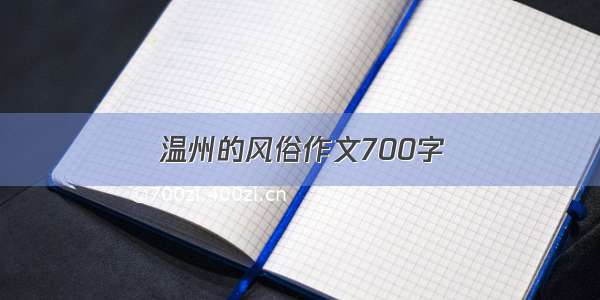
mnist数据集是一套手写体数字的图像数据集,包含60000个训练样本和10,000个测试集,由纽约大学的Yann LeCun等人维护。它包含各种手写数字图片:
本次实验我们直接将其下载好放在相应文件夹中,作为图像训练集,同时以minist_train作为图像测试集,用来装测试图像。这两个文件夹里如上图分别装0-9的文件夹,里面装入同类数字。
1.lenet 5模型
LeNet-5模型是Yann LeCun教授与1998年在论文Gradient-based learning applied to document recognition中提出的,它是第一个成功应用于数字识别问题的卷积神经网络。在MNIST数据集上,LeNet-5模型可以达到大约99.2%的正确率。
LeNet-5模型一共有7层,其中,1,3,5层为卷积层,2,4层为池化层,6,7层为全连接层。
N卷积网络
卷积神经网络利用输入是图片的特点,把神经元设计成三个维度 : width, height, depth(注意这个depth不是神经网络的深度,而是用来描述神经元的) 。比如输入的图片大小是 32 × 32 × 3 (rgb),那么输入神经元就也具有 32×32×3 的维度。下面是图解:
一个卷积神经网络由很多层组成,它们的输入是三维的,输出也是三维的,有的层有参数,有的层不需要参数。卷积神经网络通常包含以下几种层:
1.卷积层(Convolutional layer),卷积神经网路中每层卷积层由若干卷积单元组成,每个卷积单元的参数都是通过反向传播算法优化得到的。卷积运算的目的是提取输入的不同特征,第一层卷积层可能只能提取一些低级的特征如边缘、线条和角等层级,更多层的网络能从低级特征中迭代提取更复杂的特征。
2.线性整流层(Rectified Linear Units layer, ReLU layer),这一层神经的活性化函数(Activation function)使用线性整流(Rectified Linear Units, ReLU)。
3.池化层(Pooling layer),通常在卷积层之后会得到维度很大的特征,将特征切成几个区域,取其最大值或平均值,得到新的、维度较小的特征。
4.全连接层( Fully-Connected layer), 把所有局部特征结合变成全局特征,用来计算最后每一类的得分。
3.代码及识别结果
对所有训练集训练及对测试图片提取特征点
#coding:utf8import os import cv2 import numpy as npimport tensorflow as tffrom tensorflow.examples.tutorials.mnist import input_datasess = tf.InteractiveSession()def getTrain():train=[[],[]] # 指定训练集的格式,一维为输入数据,一维为其标签# 读取所有训练图像,作为训练集train_root="mnist_train" labels = os.listdir(train_root)for label in labels:imgpaths = os.listdir(os.path.join(train_root,label))for imgname in imgpaths:img = cv2.imread(os.path.join(train_root,label,imgname),0)array = np.array(img).flatten() # 将二维图像平铺为一维图像array=MaxMinNormalization(array)train[0].append(array)label_ = [0,0,0,0,0,0,0,0,0,0]label_[int(label)] = 1train[1].append(label_)train = shuff(train)return traindef getTest():test=[[],[]] # 指定训练集的格式,一维为输入数据,一维为其标签# 读取所有训练图像,作为训练集test_root="mnist_test" labels = os.listdir(test_root)for label in labels:imgpaths = os.listdir(os.path.join(test_root,label))for imgname in imgpaths:img = cv2.imread(os.path.join(test_root,label,imgname),0)array = np.array(img).flatten() # 将二维图像平铺为一维图像array=MaxMinNormalization(array)test[0].append(array)label_ = [0,0,0,0,0,0,0,0,0,0]label_[int(label)] = 1test[1].append(label_)test = shuff(test)return test[0],test[1]def shuff(data):temp=[]for i in range(len(data[0])):temp.append([data[0][i],data[1][i]])import randomrandom.shuffle(temp)data=[[],[]]for tt in temp:data[0].append(tt[0])data[1].append(tt[1])return datacount = 0def getBatchNum(batch_size,maxNum):global countif count ==0:count=count+batch_sizereturn 0,min(batch_size,maxNum)else:temp = countcount=count+batch_sizeif min(count,maxNum)==maxNum:count=0return getBatchNum(batch_size,maxNum)return temp,min(count,maxNum)def MaxMinNormalization(x):x = (x - np.min(x)) / (np.max(x) - np.min(x))return x# 1、权重初始化,偏置初始化# 为了创建这个模型,我们需要创建大量的权重和偏置项# 为了不在建立模型的时候反复操作,定义两个函数用于初始化def weight_variable(shape):initial = tf.truncated_normal(shape,stddev=0.1)#正太分布的标准差设为0.1return tf.Variable(initial)def bias_variable(shape):initial = tf.constant(0.1,shape=shape)return tf.Variable(initial)# 2、卷积层和池化层也是接下来要重复使用的,因此也为它们定义创建函数# tf.nn.conv2d是Tensorflow中的二维卷积函数,参数x是输入,w是卷积的参数# strides代表卷积模块移动的步长,都是1代表会不遗漏地划过图片的每一个点,padding代表边界的处理方式# padding = 'SAME',表示padding后卷积的图与原图尺寸一致,激活函数relu()# tf.nn.max_pool是Tensorflow中的最大池化函数,这里使用2 * 2 的最大池化,即将2 * 2 的像素降为1 * 1的像素# 最大池化会保留原像素块中灰度值最高的那一个像素,即保留最显著的特征,因为希望整体缩小图片尺寸# ksize:池化窗口的大小,取一个四维向量,一般是[1,height,width,1]# 因为我们不想再batch和channel上做池化,一般也是[1,stride,stride,1]def conv2d(x, w):return tf.nn.conv2d(x, w, strides=[1,1,1,1],padding='SAME') # 保证输出和输入是同样大小def max_pool_2x2(x):return tf.nn.max_pool(x, ksize=[1,2,2,1], strides=[1,2,2,1],padding='SAME')iterNum = 1000batch_size=1024print("load train dataset.")train=getTrain()print("load test dataset.")test0,test1=getTest()# 3、参数# 这里的x,y_并不是特定的值,它们只是一个占位符,可以在TensorFlow运行某一计算时根据该占位符输入具体的值# 输入图片x是一个2维的浮点数张量,这里分配给它的shape为[None, 784],784是一张展平的MNIST图片的维度# None 表示其值的大小不定,在这里作为第1个维度值,用以指代batch的大小,means x 的数量不定# 输出类别y_也是一个2维张量,其中每一行为一个10维的one_hot向量,用于代表某一MNIST图片的类别x = tf.placeholder(tf.float32, [None,784], name="x-input")y_ = tf.placeholder(tf.float32,[None,10]) # 10列# 4、第一层卷积,它由一个卷积接一个max pooling完成# 张量形状[5,5,1,32]代表卷积核尺寸为5 * 5,1个颜色通道,32个通道数目w_conv1 = weight_variable([5,5,1,32])b_conv1 = bias_variable([32]) # 每个输出通道都有一个对应的偏置量# 我们把x变成一个4d 向量其第2、第3维对应图片的宽、高,最后一维代表图片的颜色通道数(灰度图的通道数为1,如果是RGB彩色图,则为3)x_image = tf.reshape(x,[-1,28,28,1])# 因为只有一个颜色通道,故最终尺寸为[-1,28,28,1],前面的-1代表样本数量不固定,最后的1代表颜色通道数量h_conv1 = tf.nn.relu(conv2d(x_image, w_conv1) + b_conv1) # 使用conv2d函数进行卷积操作,非线性处理h_pool1 = max_pool_2x2(h_conv1)# 对卷积的输出结果进行池化操作# 5、第二个和第一个一样,是为了构建一个更深的网络,把几个类似的堆叠起来# 第二层中,每个5 * 5 的卷积核会得到64个特征w_conv2 = weight_variable([5,5,32,64])b_conv2 = bias_variable([64])h_conv2 = tf.nn.relu(conv2d(h_pool1, w_conv2) + b_conv2)# 输入的是第一层池化的结果h_pool2 = max_pool_2x2(h_conv2)# 6、密集连接层# 图片尺寸减小到7 * 7,加入一个有1024个神经元的全连接层,# 把池化层输出的张量reshape(此函数可以重新调整矩阵的行、列、维数)成一些向量,加上偏置,然后对其使用Relu激活函数w_fc1 = weight_variable([7 * 7 * 64, 1024])b_fc1 = bias_variable([1024])h_pool2_flat = tf.reshape(h_pool2, [-1,7 * 7 * 64])h_fc1 = tf.nn.relu(tf.matmul(h_pool2_flat, w_fc1) + b_fc1)# 7、使用dropout,防止过度拟合# dropout是在神经网络里面使用的方法,以此来防止过拟合# 用一个placeholder来代表一个神经元的输出# tf.nn.dropout操作除了可以屏蔽神经元的输出外,# 还会自动处理神经元输出值的scale,所以用dropout的时候可以不用考虑scalekeep_prob = tf.placeholder(tf.float32, name="keep_prob")# placeholder是占位符h_fc1_drop = tf.nn.dropout(h_fc1, keep_prob)# 8、输出层,最后添加一个softmax层w_fc2 = weight_variable([1024,10])b_fc2 = bias_variable([10])y_conv = tf.nn.softmax(tf.matmul(h_fc1_drop, w_fc2) + b_fc2, name="y-pred")# 9、训练和评估模型# 损失函数是目标类别和预测类别之间的交叉熵# 参数keep_prob控制dropout比例,然后每100次迭代输出一次日志cross_entropy = tf.reduce_sum(-tf.reduce_sum(y_ * tf.log(y_conv),reduction_indices=[1]))train_step = tf.train.AdamOptimizer(1e-4).minimize(cross_entropy)# 预测结果与真实值的一致性,这里产生的是一个bool型的向量correct_prediction = tf.equal(tf.argmax(y_conv, 1), tf.argmax(y_, 1))# 将bool型转换成float型,然后求平均值,即正确的比例accuracy = tf.reduce_mean(tf.cast(correct_prediction, tf.float32))# 初始化所有变量,在3月2号以后,用 tf.global_variables_initializer()替代tf.initialize_all_variables()sess.run(tf.initialize_all_variables())# 保存最后一个模型saver = tf.train.Saver(max_to_keep=1)for i in range(iterNum):for j in range(int(len(train[1])/batch_size)):imagesNum=getBatchNum(batch_size,len(train[1]))batch = [train[0][imagesNum[0]:imagesNum[1]],train[1][imagesNum[0]:imagesNum[1]]]train_step.run(feed_dict={x: batch[0], y_: batch[1], keep_prob: 0.5})if i % 2 == 0:train_accuracy = accuracy.eval(feed_dict={x: batch[0], y_: batch[1],keep_prob: 1.0})print("Step %d ,training accuracy %g" % (i, train_accuracy))print("test accuracy %f " % accuracy.eval(feed_dict={x: test0, y_:test1, keep_prob: 1.0})) # 保存模型于文件夹saver.save(sess,"save/model")
测试:
import tensorflow as tfimport numpy as npimport tkinter as tkfrom tkinter import filedialogfrom PIL import Image, ImageTkfrom tkinter import filedialogimport timedef creat_windows():win = tk.Tk() # 创建窗口sw = win.winfo_screenwidth()sh = win.winfo_screenheight()ww, wh = 400, 450x, y = (sw-ww)/2, (sh-wh)/2win.geometry("%dx%d+%d+%d"%(ww, wh, x, y-40)) # 居中放置窗口win.title('手写体识别') # 窗口命名bg1_open = Image.open("timg.jpg").resize((300, 300))bg1 = ImageTk.PhotoImage(bg1_open)canvas = tk.Label(win, image=bg1)canvas.pack()var = tk.StringVar() # 创建变量文字var.set('')tk.Label(win, textvariable=var, bg='#C1FFC1', font=('宋体', 21), width=20, height=2).pack()tk.Button(win, text='选择图片', width=20, height=2, bg='#FF8C00', command=lambda:main(var, canvas), font=('圆体', 10)).pack()win.mainloop()def main(var, canvas):file_path = filedialog.askopenfilename()bg1_open = Image.open(file_path).resize((28, 28))pic = np.array(bg1_open).reshape(784,)bg1_resize = bg1_open.resize((300, 300))bg1 = ImageTk.PhotoImage(bg1_resize)canvas.configure(image=bg1)canvas.image = bg1init = tf.global_variables_initializer()with tf.Session() as sess:sess.run(init)saver = tf.train.import_meta_graph('save/model.meta') # 载入模型结构saver.restore(sess, 'save/model') # 载入模型参数graph = tf.get_default_graph() # 加载计算图x = graph.get_tensor_by_name("x-input:0") # 从模型中读取占位符变量keep_prob = graph.get_tensor_by_name("keep_prob:0")y_conv = graph.get_tensor_by_name("y-pred:0") # 关键的一句 从模型中读取占位符变量prediction = tf.argmax(y_conv, 1)predint = prediction.eval(feed_dict={x: [pic], keep_prob: 1.0}, session=sess) # feed_dict输入数据给placeholder占位符answer = str(predint[0])var.set("预测的结果是:" + answer)if __name__ == "__main__":creat_windows()
选择测试集图片进行识别
准确率为:
可以看到,通过卷积神经网络的训练,这个容器已经可以对一些基本较为明显的图片进行正确的识别。由于没有安装GPU版本的tensorflow,使用cpu版本的运行起来速度大大降低。
















